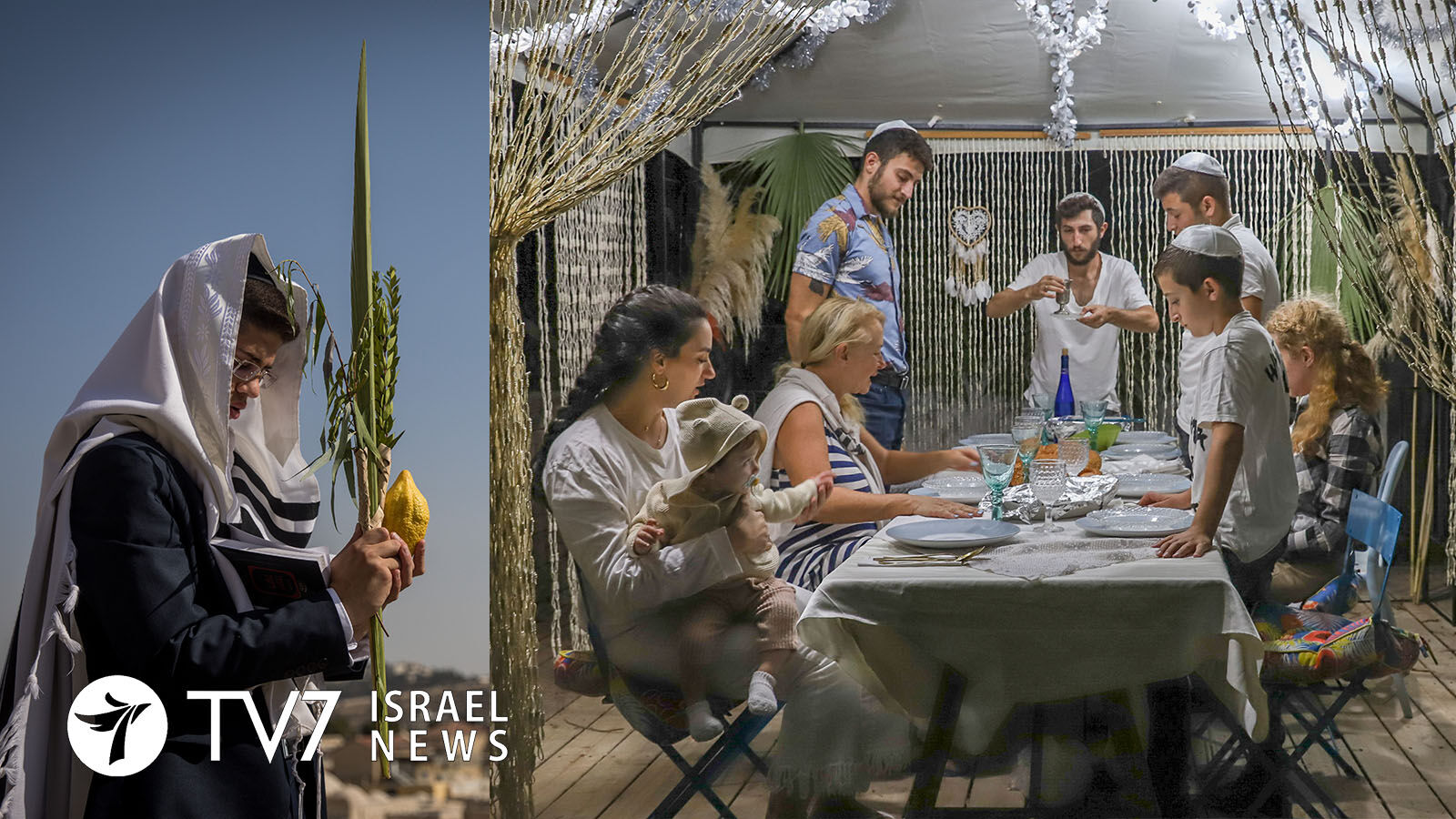Jews around the world are currently observing the week-long holiday.
By Erin Viner
In accordance with all Jewish holidays that begin at sundown, Sukkot celebration began on Sunday evening.
Sukkot is referred to as the “Festival of Ingathering at the year’s end” in the Biblical passage of Exodus 34:22, while Leviticus 23:42–43 says the hut-like structures are meant to evoke the temporary refuges lived in by the Israelites during their 40-year sojourn in the desert after their Exodus from slavery in Egypt prior to reaching freedom in the Land of Israel.
In commemoration of their ancestors, many families construct outdoor “sukkot” (walled booths, also known as tabernacles) in their gardens, building entrances or balconies. Palm leaves are traditionally used for roofs, through which the night stars are visible.
Throughout the holiday, families host festive meals and gatherings with friends within the sukkot, which are often adorned with decorations including lights. Many observant Jews both eat and sleep inside the booths overnight.
Kosher restaurants and other venues also place similar structures on site where their observant patrons are served.
Other activities include the Biblical instruction to ‘take up of the four species” as written in Leviticus 23:40: “And you shall take on the first day the fruit of splendid trees, branches of palm trees and boughs of leafy trees and willows of the brook, and you shall rejoice before the LORD your God for seven days.” Talmudic tradition identifies the four species as the “etrog” fruit of a citron tree, the “lulav” green fond of a date palm, a “hadass” myrtle bough and an “aravah” willow branch, which are bound together and waved each day of the festival.
The Birkat HaKohanim (Priestly Blessing) will also be held tomorrow, falling on the date of 17 Tishrei 5783 according to the Hebrew calendar. The holiest site in Judaism, the Western Wall Plaza, is currently being prepared for the bi-annual pilgrimage of tens of thousands of worshippers that culminates a month of performing Slichot (penitential prayers).
The holiday concludes in the State of Israel at sundown on 15 October following celebration of Simchat Torah (“Rejoicing of the Bible”), while Jewish communities abroad observe an eighth day.
Many Christians also commemorate the festival in fulfillment of Zechariah 14:16: “the nations…shall come up from year to year to worship the King, the Lord of hosts, and to keep the Feast of Tabernacles.’
Tens of thousands of Christians traditionally flock to the Holy Land to participate in the annual Feast of Tabernacles hosted by the International Christian Embassy Jerusalem (ICEJ), which has followers from more than 170 nations worldwide. The mega event had become a beacon of Jewish-Christian relations highlighted by a major march through Jerusalem with people of both faiths waving the Israeli flag together while singing the country’s national anthem. This year’s event runs 9-16 October.
The IDF has imposed a general closure on all crossings into Israel from the West Bank, as it does to ensure public safety during Jewish holidays and election days. Security is particularly heightened this year due to a surge of recent Palestinian terror attacks. Entry is permitted only for humanitarian, medical or exceptional circumstances.
